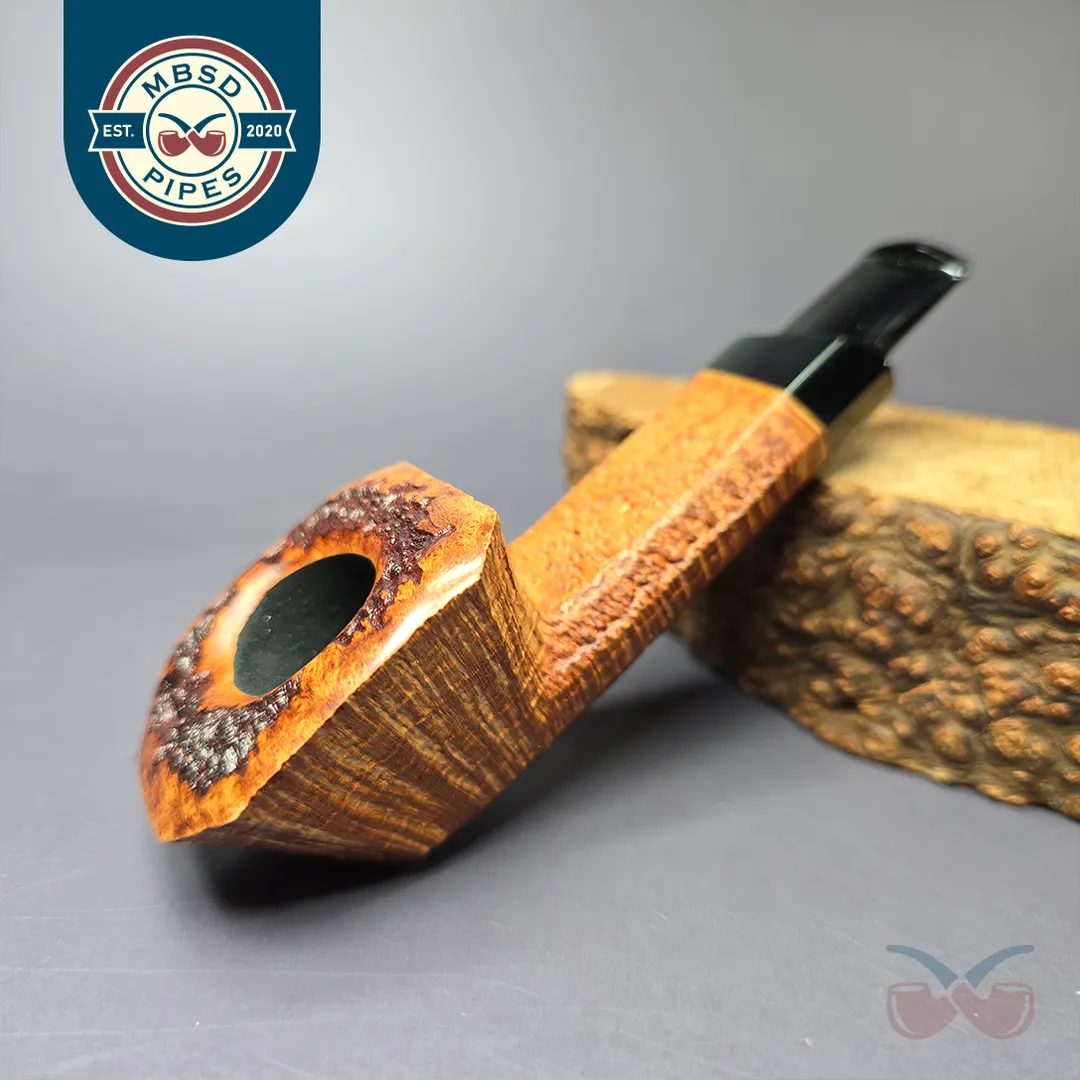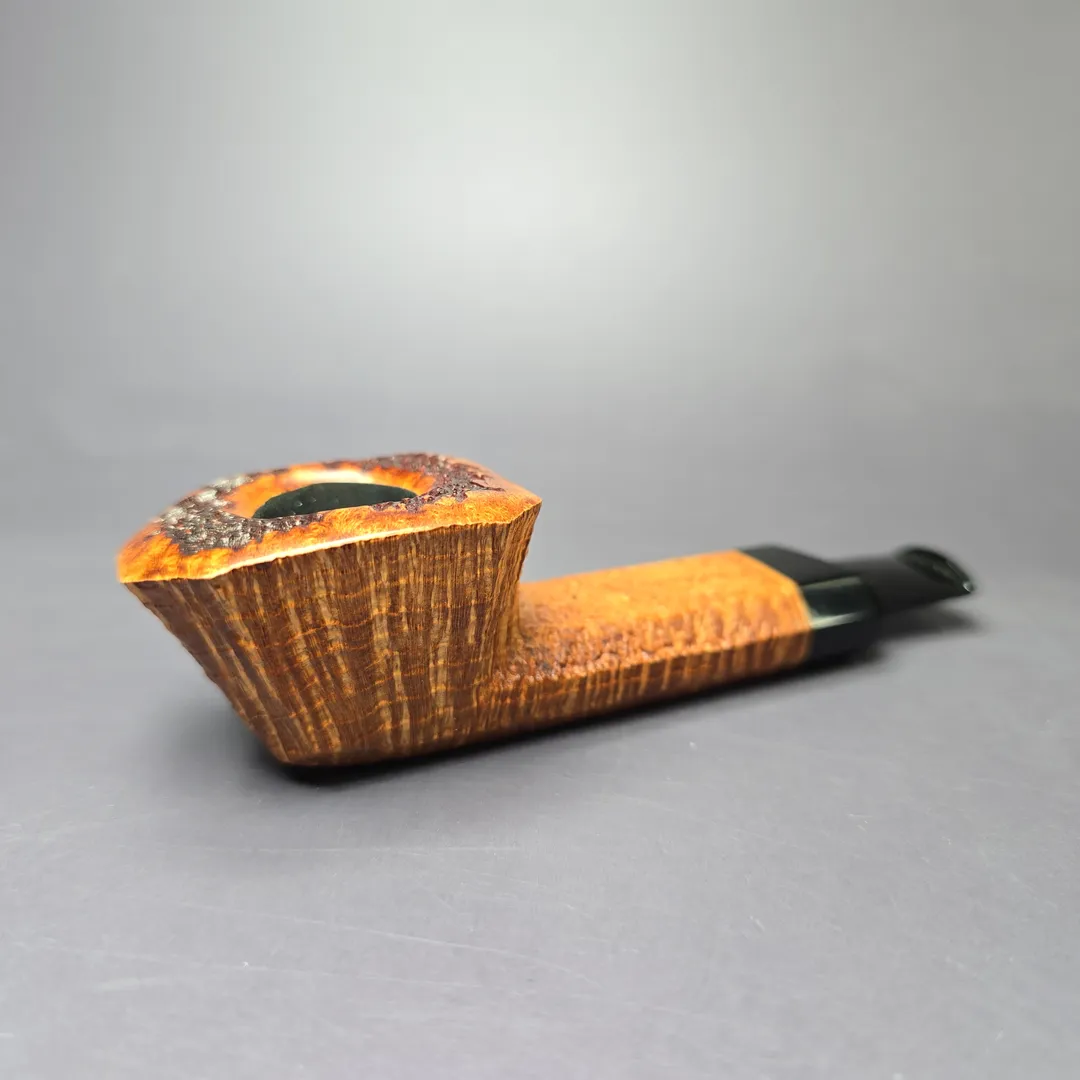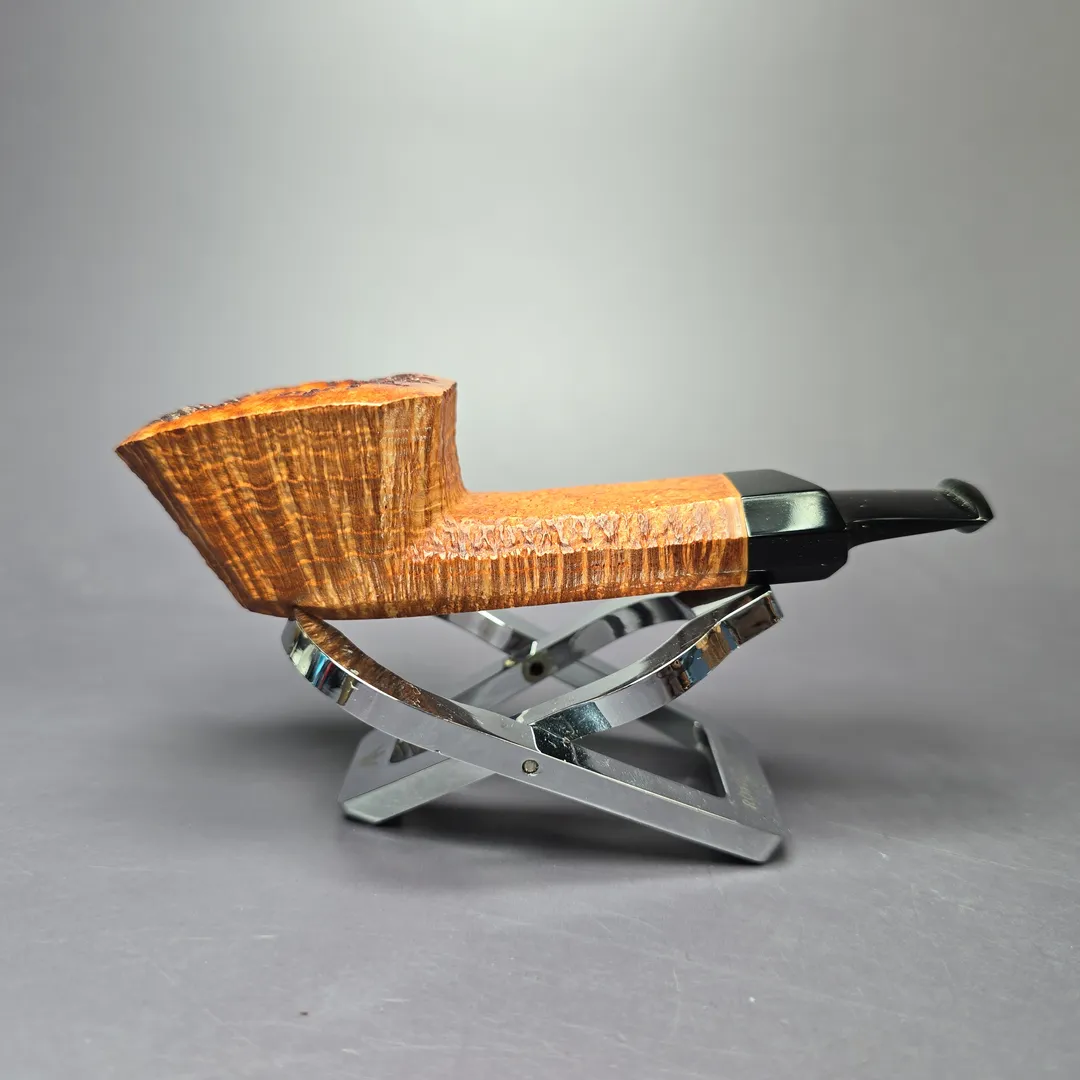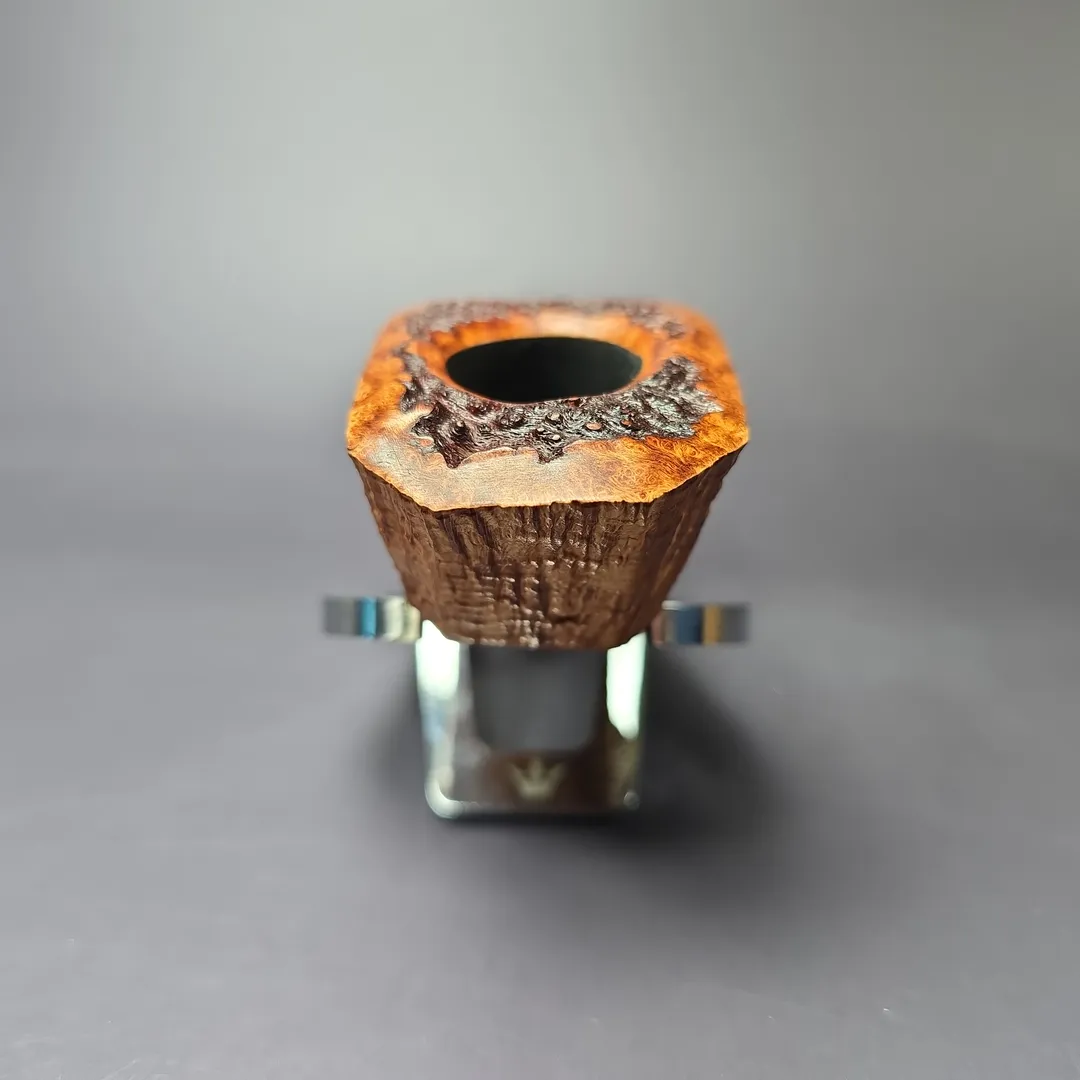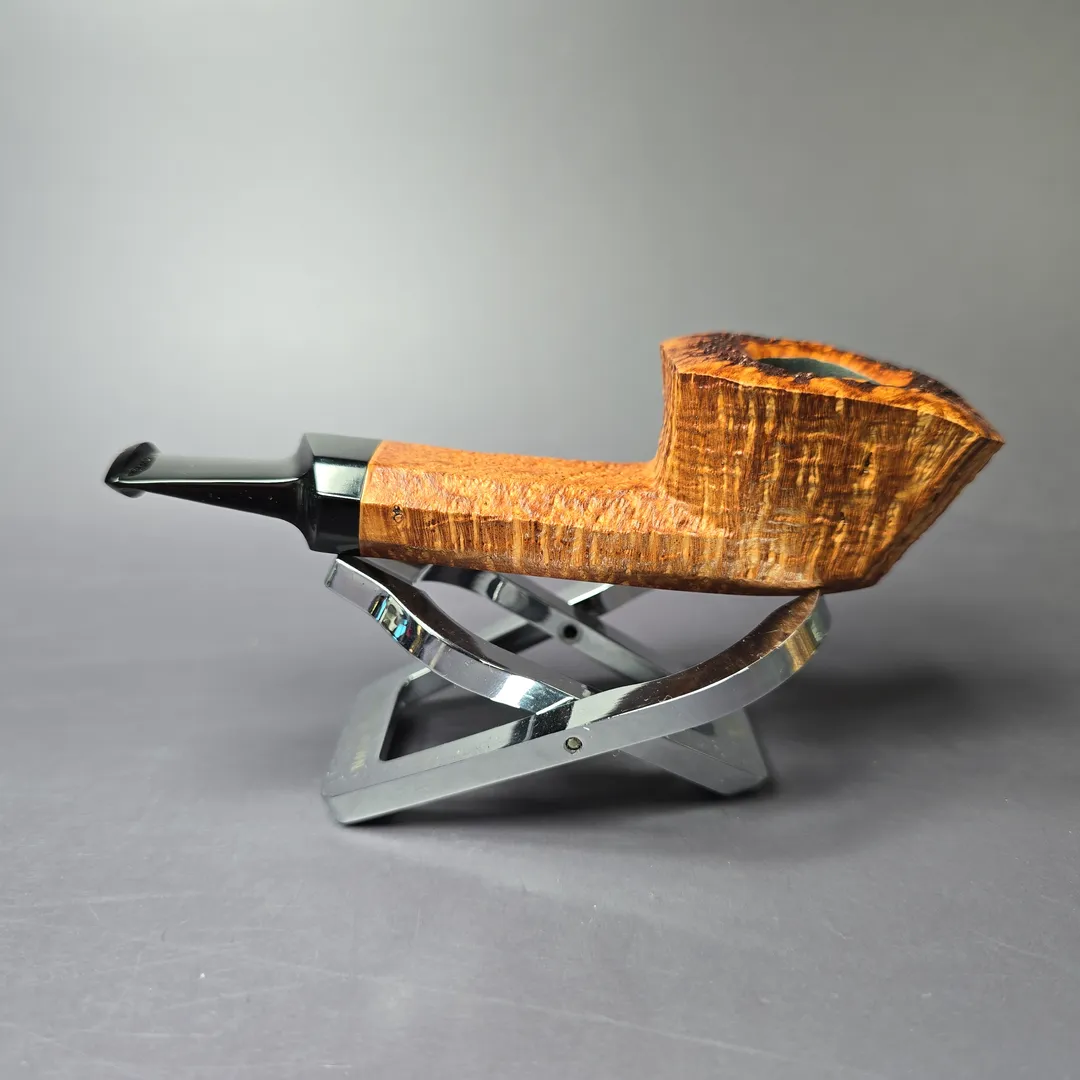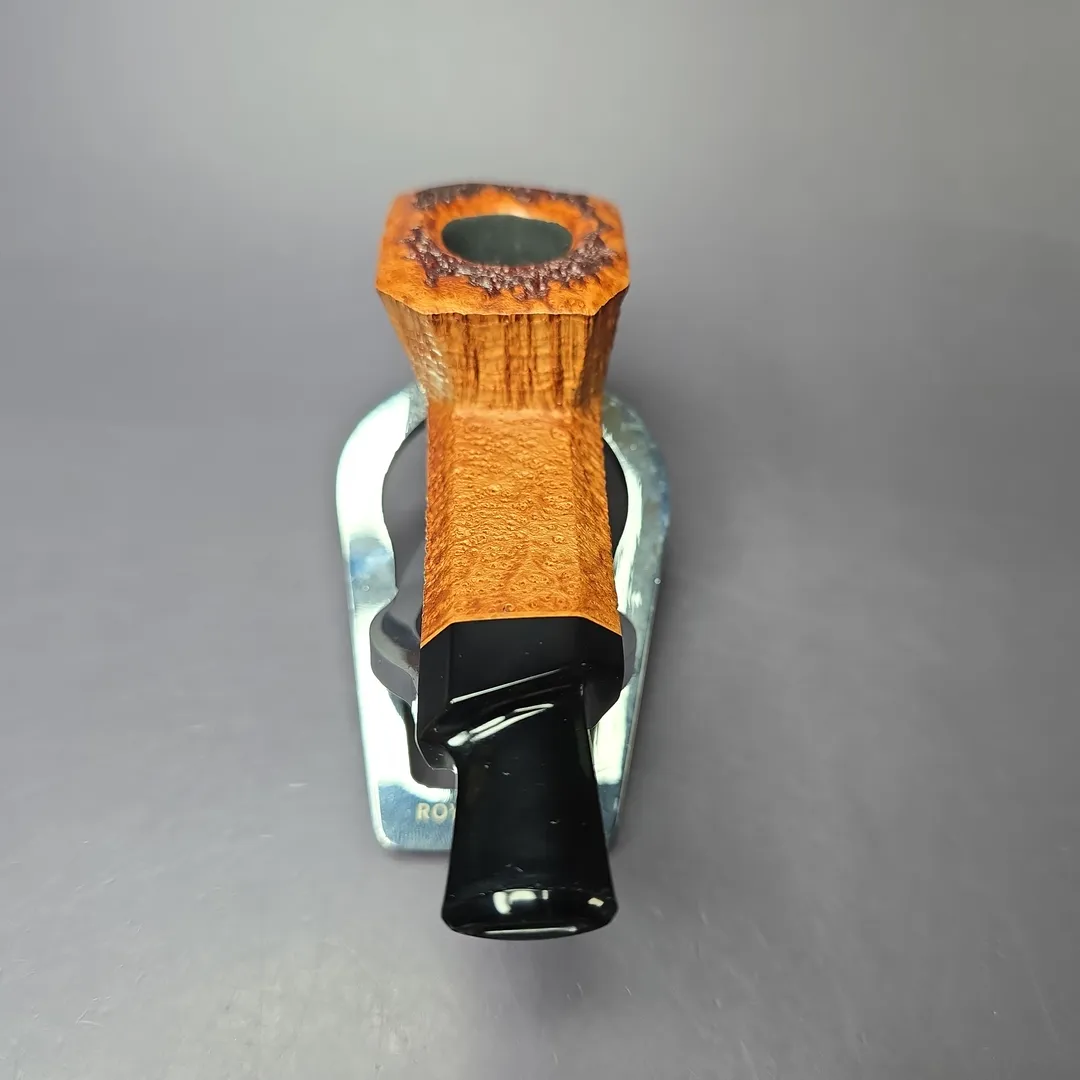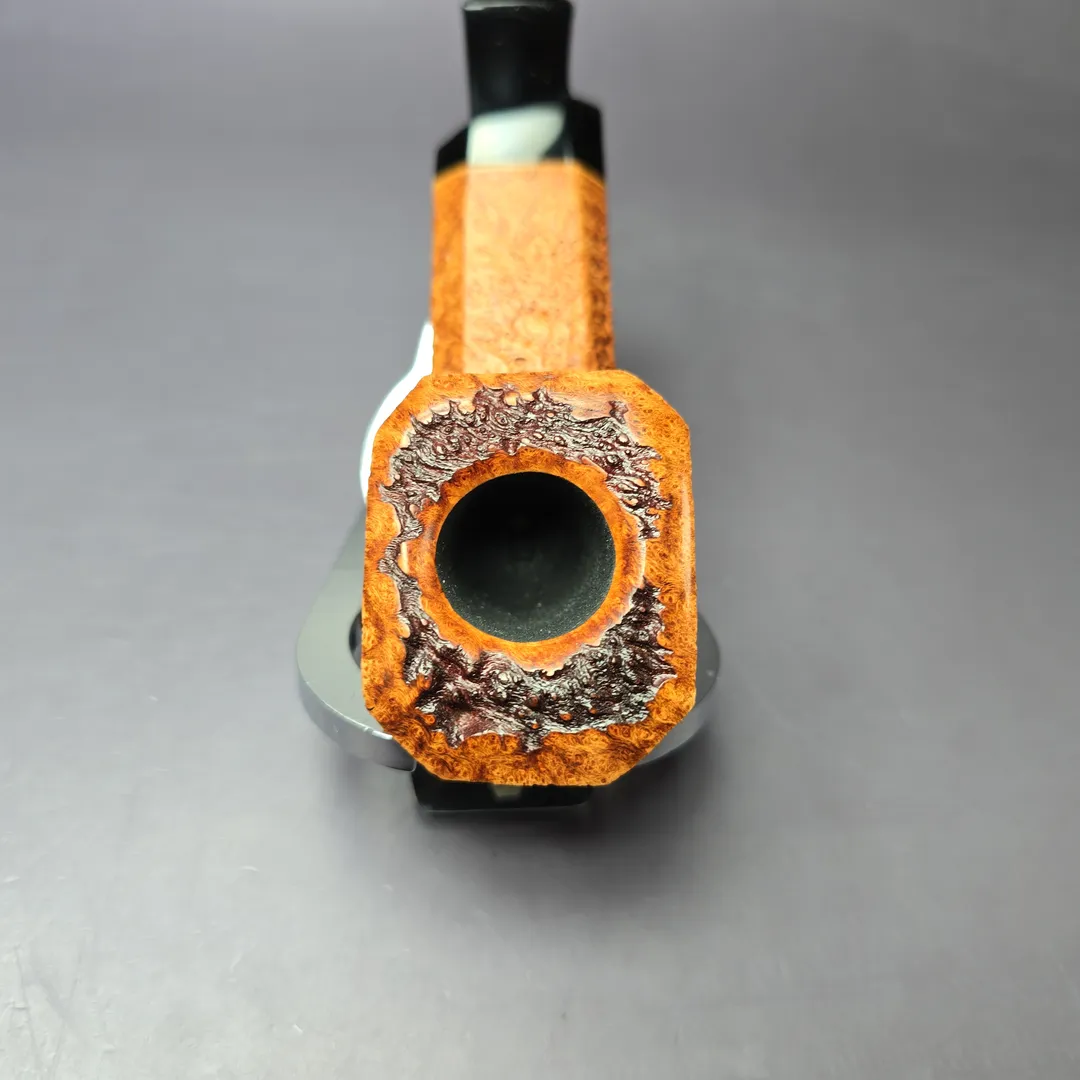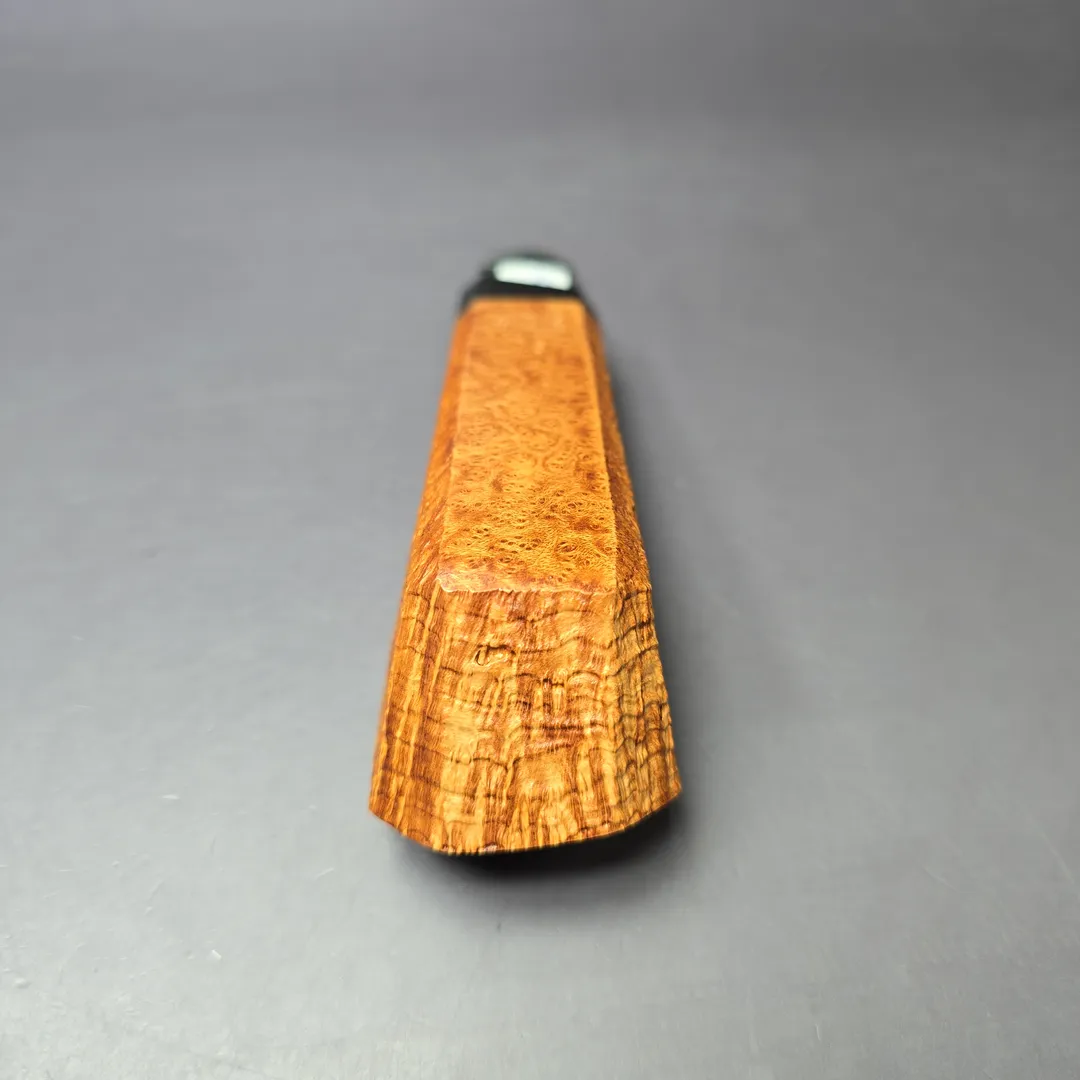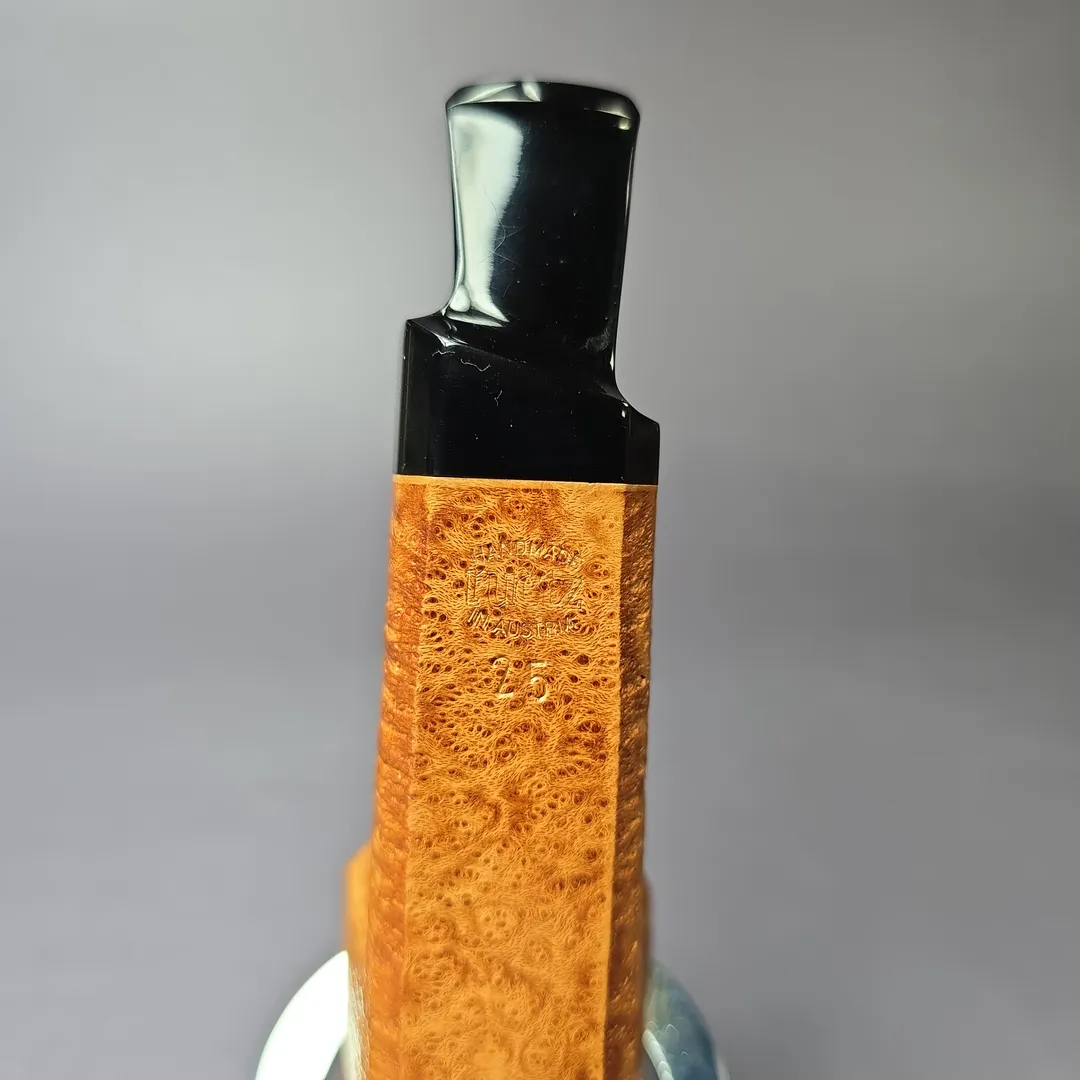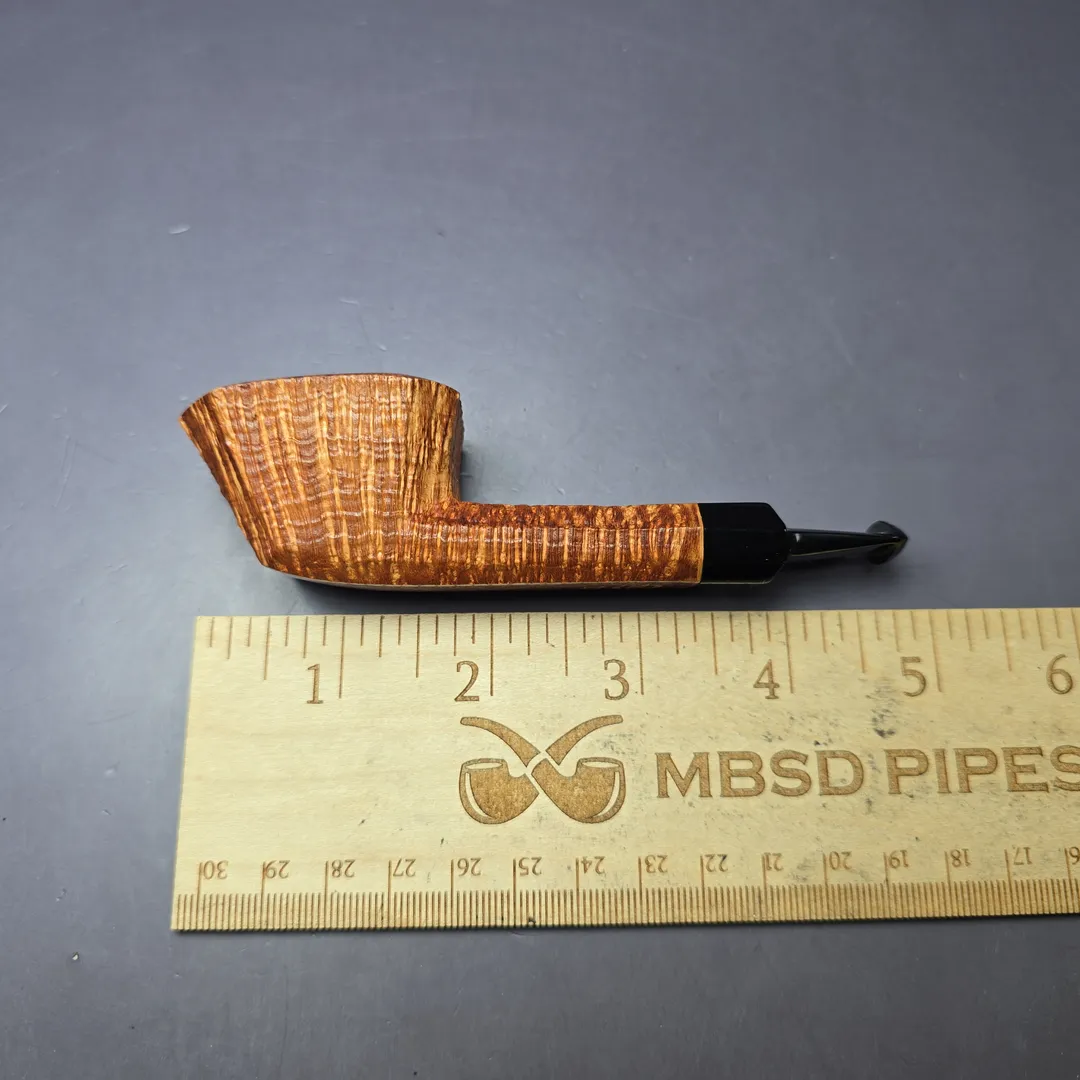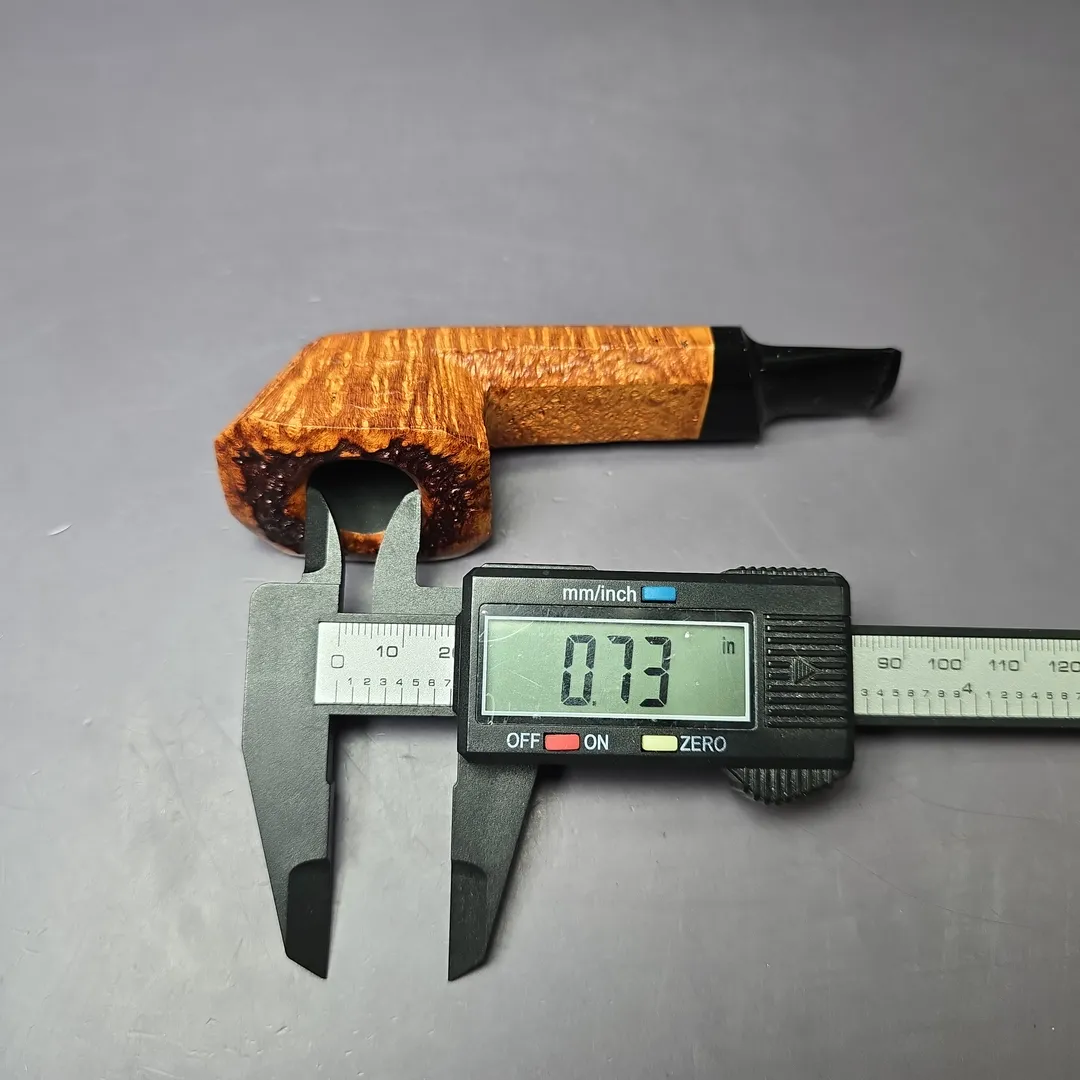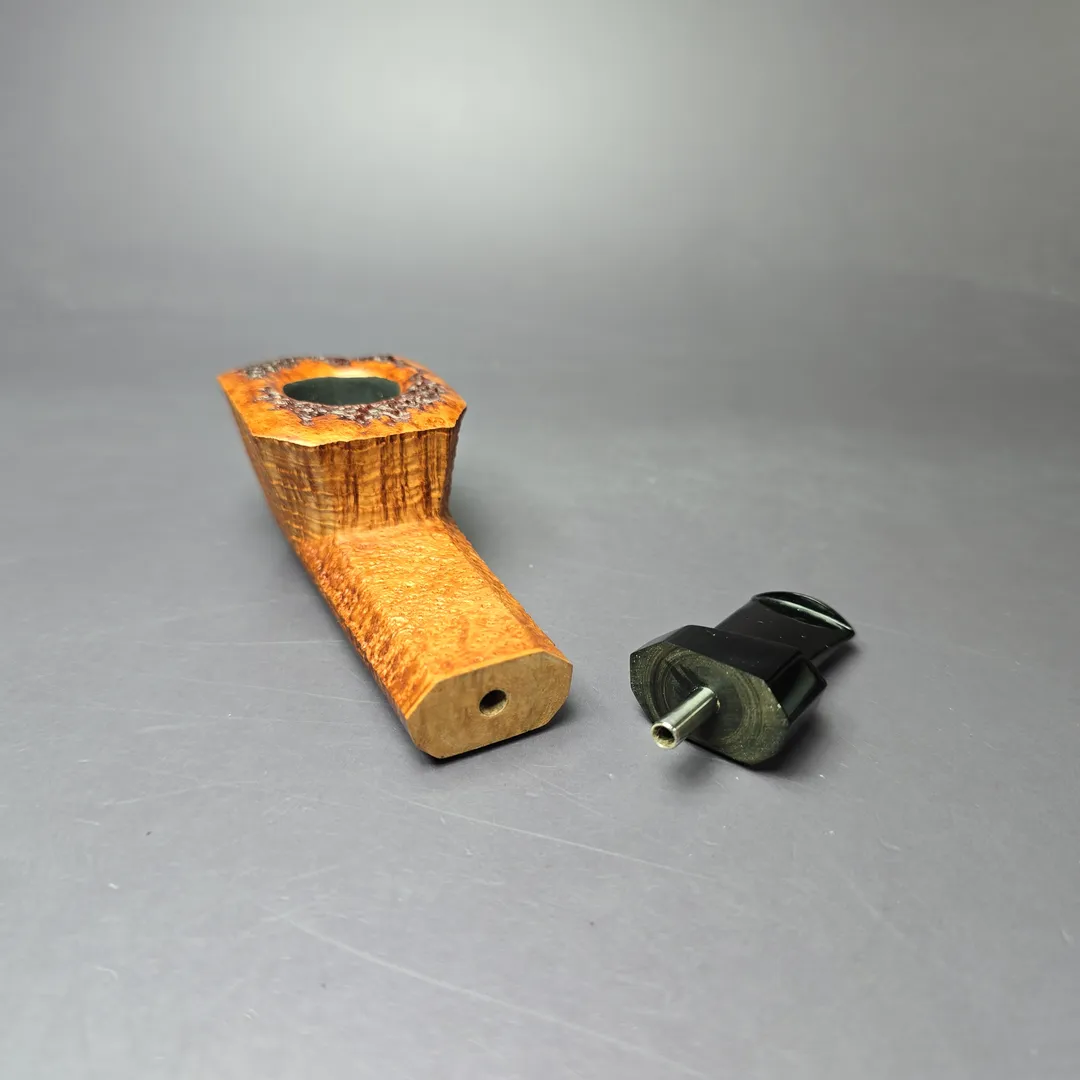Christian Ruetz Sandblasted Squat Panel Dublin Handmade Briar Pipe, New
Out of stock
Description
Tyrol’s Christian Ruetz may well be the most exciting and acclaimed pipe maker to have come out of Austria since Peter Matzhold. A committed pipe smoker since his youth, Ruetz crafted his first pipe in 2014, using a carving knife gifted by his father-in-law and wood from a cherry tree. Ruetz was, from then on, hooked and soon moved onto briar, though he has maintained a relatively low-tech approach to pipe construction throughout his career.
Though Ruetz’s experiments with briar began a decade ago, in recent years his exercises in style have coalesced into an instantly recognizable identity, which has coincided with a no less than meteoric rise within the international pipe community and industry.
As is something of a tradition for today’s artisans, Ruetz would eventually make his pilgrimage to the workshop of Tom Eltang in Copenhagen, where he was invited to spend a day observing the old master at work. Yet it must also be stressed that Ruetz’s design philosophy is distinct from—and, to an extent, contrary to—that of much of modern Scandinavian pipe making.
Against the functionalism of Eltang et al., Ruetz is far more of a Romantik. In his own words, his style is encompassed by three words: Natur, Rauheit, and Imperfektion, (roughly, “nature,” “ruggedness/rawness,” and “imperfection”). This style and underlying ethos comes from a life spent recognizing the natural world for what it is—including the sublime, towering ranges of the Eastern Alps visible from his workshop windows.
I’ve mentioned that there are affinities between Ruetz’s pipes and those of Micah “Yeti” Cryder, and I think this one is the strongest example of that in this batch. Like Cryder’s work, this squat Dublin from Ruetz is laden with panels and planes, taking it beyond the realms of heavily faceted styles, such as in the work of Poul Ilsted, and into what Cryder appropriately describes as art deco. The pipe is also beautifully sandblasted, with the same distinct interplay of the briar’s growth rings and the straight lines that dominate its form. But Ruetz is not Cryder; instead, he’s far more of a naturalist, which we can see with the multiple points where Ruetz [re]introduces asymmetry into his design. Whether it’s the diagonal saddle of the stem, the slight off angles of the bowl’s paneling, or the eruptions of plateaux on the rim, it’s as if there’s something lurking in the materials themselves that can’t quite be tamed. In the past, this approach has been associated with Japanese design, though I’m inclined to think a little closer to this one’s home: less wabi sabi and more “Apollo versus Dionysus.” On a last note, the briar block for this pipe came from German master Cornelius Manz, as something of a “challenge” for his good friend Ruetz. I don’t know Manz personally, but I doubt he was disappointed with the outcome.
Details:
Length: 4.8″ / 121.9mm
Bowl Width: 0.73 / 18.54mm
Bowl Depth: 0.98″ / 24.89mm
Weight: 1.4oz / 40g
Additional information
| Weight | 15 oz |
|---|
| Condition | New |
|---|

